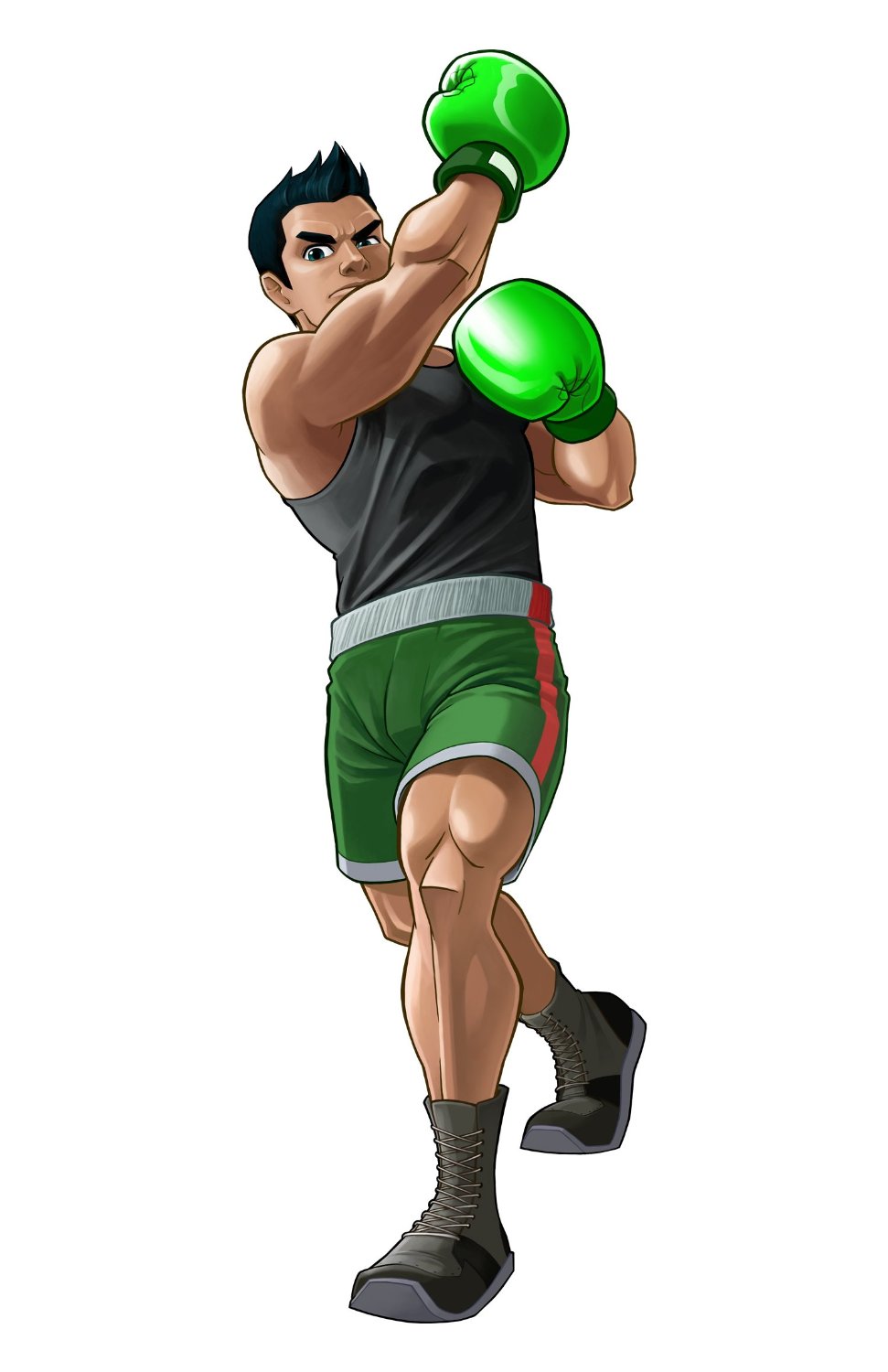Skills
The Skills of Little Mac
Discuss this post:
On the forums!
On Reddit!
The Sweet Science
As far as characters to emulate, Little Mac is great! Why? Well, believe it or not, his lack of nuance and expanded skill sets is actually a serious asset. Little Mac is a boxer. That’s it. He’s an incredibly good boxer, and that is who he is. This makes it really easy to hone in and focus on a single skill set, which is the best way to become incredibly good at something. Multi-tasking makes things take longer, progress slower, and is general inefficient. Picking one thing you want to be really, really good at means you’ll get really good at it a lot faster than someone trying to get really good at a bunch of stuff.
So let’s talk about boxing. Honestly, boxing is like any martial art. You can read, and watch videos, and study professional matches, but in the end there’s no substitution for some real, hands-on training. Luckily, boxing is a pretty popular martial art (at least in the western world), so finding somewhere near you that teaches it is a pretty good possibility for most. The question is how to choose a location, and how to not get scammed.
First off, some of the rules for avoiding a McDojo definitely apply here. No sparring is a big one, any gym that just has everyone working the bag all the time is most likely just a hyped up cardio gym. Probably a good workout, but no combat training. Lineage, as well, not that you should care who the trainers trained under, necessarily, but it is worth it to check out the records of who they trained. Finally, you definitely want to avoid asshole trainers. Boxing trainers are notoriously cantankerous and sparing on the compliments, sure, but they should still be there to help you get better and improve, not to stroke their own ego and completely destroy you emotionally.
Boxing gyms are usually different in that you don’t sign up for “classes” with a bunch of other people (with the exception of some group beginner classes to nail down the basics). Usually you’re instead paying for one-on-one training time with one of the gym’s trainers (sometimes you’ll train with one or two other students working with the same trainer). Trainers usually charge either by the hour or by the session, either way the prices can run from $5 all the way up to $200 per hour/session. This price can depend upon both the trainer’s skill and his ego, so shoot for what you can afford, and worry about training with the elite/expensive guys when you’re going in for the title match, eh? =P
Gyms can come in several different flavors. The most classic boxing gym looks like something out of a Rocky movie, complete with the stench of old gym socks. It will feature a ring or two, maybe a weight set or two, and a whole bunch of heavy bags and speed bags. The next flavor you may find is a local YMCA or neighborhood/youth gym. These places will feature more of a varied demographic, and are usually a welcoming spot to begin training. Typically they don’t get super-competitive, but they are a good place to learn basics. Finally, you have MMA gyms, which are becoming more and more common nowadays. Sometimes these places only teach kickboxing/muay thai and BJJ, but you’ll find a lot offer solid boxing classes, too. Usually they’re good places to study, but again, steer clear of some place that just has you working the bag in group classes for an hour – they’re just glorified cardio gyms. You want a place that develops your fighting through drills, sparring, and cross-training as well.
The Power of the Pugilist
When Bruce Lee wanted to punch harder, he trained with boxer’s. His mindset there fell in line with my statement about monotasking in the beginning. When you work on doing only one thing (punching), you learn how to do it really, really well. So how do boxers punch so hard? Well, in addition to strength training, which we covered in The Little Mac Workout, they also work on developing speed. Getting stronger definitely improves your speed, but there are some other things you can do as well.
First off, your best bet is to punch a lot. Punching the air doesn’t do too much for you, but punching things does. This is where heavy bag work comes in. Working with a heavy bag is more than just mindlessly slamming your fists against it, though. You want to make sure you’re setting your feet at the point of impact, turning your hips into your strikes, engaging your lats, and working real combinations. Practicing a lot does not inherently improve you, unless you’re practicing good technique, too. Working the heavy bag should be one part cardio, one part technique development, and one part power development. If all you’re doing is hitting the bag really hard, you’re missing two-thirds of the exercise.
The other tool boxers use to develop their speed and timing is the speed bag. Again, there’s a lot more to this device than just slamming your hands into the speed bag as fast as you can. Rather than try and write up an advanced technique like this, I present you with this fantastic video:
Float Like a Butterfly
Finally, we have footwork. First off, I’d recommend you check out my tutorial on The Combat Glide. Our own Gilver, over on the forums, had this to say about how it improved his sword fighting skill: “It’s absolutely changed how I employ my heavy hitters, and all around seriously improved my game. As basic as this concept is, my close-range fighting capability is immeasurably enhanced by its application.” The principles of The Combat Glide are applicable to any combat discipline, however, so it’s definitely worth taking a look to improve your unarmed combat skills, as well!
I’d also recommend checking out The Sheik Agility Workout, and consider subbing it in for your “B” cardio workout occasionally, if you’re following The Little Mac Workout. It’s great for building solid lower body coordination, agility, and balance, and is a good all-around high intensity cardio option.
Finally, make sure you pay attention to your feet whenever you’re doing any kind of combat application or practice. Sparring, heavy bag work, drills, whatever, all of them are times to work your lower body skills. Staying on your toes, moving decisively, turning your hips into your strikes and away from your slips are all essential skills to master and build into solid habits. Remember, in actual combat you don’t have time to think, so you need to drill these tendencies into second nature habits that your subconscious falls back on. Turn it into muscle memory!
That’s all for The Skills of Little Mac! Tune in Thursday to take a look into the mindset of a champion, with The Mind of Little Mac! Also, I apologize for the lack of video this past Saturday. Mother Nature continued to work against me in every way possible. The good news is, I managed to get a break in the rainy weather long enough to finish filming the footage I needed late in the afternoon on Sunday. Once I’m done editing it, I’ll be able to get it up on the Youtube channel. You should be seeing it sometime between now and Thursday =D
Live boldly, change the world, and continue to be awesome!
Dan “DaRatmastah” Wallace





Wow, I got quoted! And the Combat Glide got a shout out! Good day all around!
=D
Pingback: The Skills of Raoh | Be a Game Character
Pingback: The Skills of Gabriel Belmont | Be a Game Character
Pingback: Captain Falcon: Show Me Your Moves | Be a Game Character
Pingback: Master of the Fist | Be a Game Character